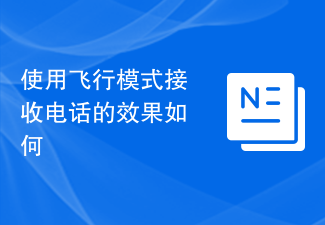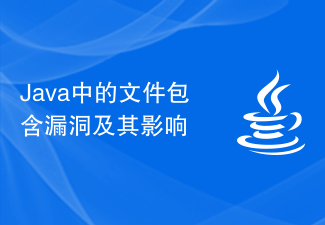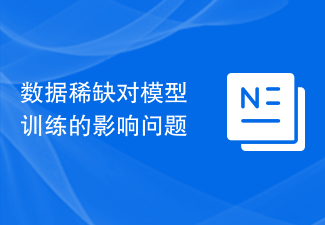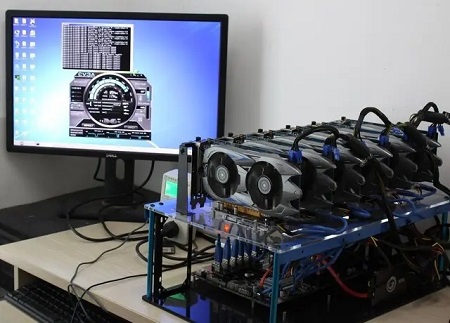
To understand the importance and impact of event bubbling, you need specific code examples
Event bubbling refers to the event bubbling in the nested HTML in JavaScript When an event is triggered in an element, it will be passed up layer by layer, and the same type of event on each parent element will be triggered in turn. Understanding the importance and impact of event bubbling can help developers better use and control events and improve code maintainability and performance.
The importance of the event bubbling mechanism is that it provides a natural and intuitive way of event delivery. When the user triggers an event on the page, not only the event listening function on the current element will be triggered, but also the event listening function on the parent element of the element will be triggered in sequence, until the root element (usually the document object). This bubbling mechanism ensures that no operations are lost during event delivery, making it easier for developers to write flexible and maintainable code.
The following is a specific code example that demonstrates the impact of the event bubbling mechanism:
The HTML code is as follows:
<!DOCTYPE html>
<html>
<head>
</head>
<body>
<div id="parent">
<div id="child">
<button id="btn">点击我</button>
</div>
</div>
<script src="script.js"></script>
</body>
</html>The JavaScript code (script.js) is as follows:
// 获取元素
var parent = document.getElementById('parent');
var child = document.getElementById('child');
var btn = document.getElementById('btn');
// 添加事件监听函数
parent.addEventListener('click', function() {
console.log('父元素被点击');
});
child.addEventListener('click', function() {
console.log('子元素被点击');
});
btn.addEventListener('click', function() {
console.log('按钮被点击');
});In the above code, there is a parent element (id is parent), a child element (id is child) and a button element (id is btn) on the page. Click event listening functions are added to the parent element, child element and button element respectively.
When we click the button, we will find that the console output includes not only "the button was clicked", but also "the child element was clicked" and "the parent element was clicked". This is because the event bubbling mechanism causes the click event on the button element to be triggered, and the event will continue to be passed to the parent element and root element. If event bubbling is canceled, only "Button clicked" will be output.
Through the above code examples, we can see the importance of the event bubbling mechanism in development. It allows us to handle events more flexibly. We can add an event listening function on the parent element to handle a type of event uniformly. At the same time, the event bubbling mechanism also provides a way to optimize performance, which can reduce repeated event listening functions and improve the maintainability of the code.
In summary, understanding the importance and impact of event bubbling can help developers write more efficient and elegant code. Reasonable use of the event bubbling mechanism can improve the readability and maintainability of the code, and can also better handle and control events. I hope that through the introduction of this article, readers will have a deeper understanding and application of event bubbling.
The above is the detailed content of Understand the importance of event bubbling and its impact. For more information, please follow other related articles on the PHP Chinese website!
 使用飞行模式接收电话的效果如何Feb 20, 2024 am 10:07 AM
使用飞行模式接收电话的效果如何Feb 20, 2024 am 10:07 AM飞行模式别人打电话会怎么样手机已经成为人们生活中必不可少的工具之一,它不仅仅是通信工具,还是娱乐、学习、工作等多种功能的集合体。随着手机功能的不断升级和改进,人们对于手机的依赖性也越来越高。在飞行模式出现后,人们可以更方便地在飞行中使用手机。但是,有人担心在飞行模式下别人打电话的情况会对手机或者使用者产生什么样的影响呢?本文将从几个方面来进行分析和讨论。首先
 VBOX_E_OBJECT_NOT_FOUND(0x80bb0001)VirtualBox错误Mar 24, 2024 am 09:51 AM
VBOX_E_OBJECT_NOT_FOUND(0x80bb0001)VirtualBox错误Mar 24, 2024 am 09:51 AM在VirtualBox中尝试打开磁盘映像时,可能会遇到错误提示,指示硬盘无法注册。这种情况通常发生在您尝试打开的VM磁盘映像文件与另一个虚拟磁盘映像文件具有相同的UUID时。在这种情况下,VirtualBox会显示错误代码VBOX_E_OBJECT_NOT_FOUND(0x80bb0001)。如果您遇到这个错误,不必担心,有一些解决方法可以尝试。首先,您可以尝试使用VirtualBox的命令行工具来更改磁盘映像文件的UUID,这样可以避免冲突。您可以运行命令`VBoxManageinternal
 Java中的文件包含漏洞及其影响Aug 08, 2023 am 10:30 AM
Java中的文件包含漏洞及其影响Aug 08, 2023 am 10:30 AMJava是一种常用的编程语言,用于开发各种应用程序。然而,就像其他编程语言一样,Java也存在安全漏洞和风险。其中一个常见的漏洞是文件包含漏洞(FileInclusionVulnerability),本文将探讨文件包含漏洞的原理、影响以及如何防范这种漏洞。文件包含漏洞是指在程序中通过动态引入或包含其他文件的方式,但却没有对引入的文件做充分的验证和防护,从
 如何关闭抖音评论功能?关闭抖音评论功能后会怎么样?Mar 23, 2024 pm 06:20 PM
如何关闭抖音评论功能?关闭抖音评论功能后会怎么样?Mar 23, 2024 pm 06:20 PM在抖音平台上,用户不仅可以分享自己的生活点滴,还可以与其他用户互动交流。有时候评论功能可能会引发一些不愉快的经历,如网络暴力、恶意评论等。那么,如何关闭抖音评论功能呢?一、如何关闭抖音评论功能?1.登录抖音APP,进入个人主页。2.点击右下角的“我”,进入设置菜单。3.在设置菜单中,找到“隐私设置”。4.点击“隐私设置”,进入隐私设置界面。5.在隐私设置界面,找到“评论设置”。6.点击“评论设置”,进入评论设置界面。7.在评论设置界面,找到“关闭评论”选项。8.点击“关闭评论”选项,确认关闭评论
 数据稀缺对模型训练的影响问题Oct 08, 2023 pm 06:17 PM
数据稀缺对模型训练的影响问题Oct 08, 2023 pm 06:17 PM数据稀缺对模型训练的影响问题,需要具体代码示例在机器学习和人工智能领域,数据是训练模型的核心要素之一。然而,现实中我们经常面临的一个问题是数据稀缺。数据稀缺指的是训练数据的量不足或标注数据的缺乏,这种情况下会对模型训练产生一定的影响。数据稀缺的问题主要体现在以下几个方面:过拟合:当训练数据量不够时,模型很容易出现过拟合的现象。过拟合是指模型过度适应训练数据,
 硬盘坏道会导致什么问题Feb 18, 2024 am 10:07 AM
硬盘坏道会导致什么问题Feb 18, 2024 am 10:07 AM硬盘坏道是指硬盘的物理故障,即硬盘上的储存单元无法正常读取或写入数据。坏道对硬盘的影响是非常显著的,它可能导致数据丢失、系统崩溃和硬盘性能下降等问题。本文将会详细介绍硬盘坏道的影响及相关解决方法。首先,硬盘坏道可能导致数据丢失。当硬盘中的某个扇区出现坏道时,该扇区上的数据将无法读取,从而导致文件损坏或无法访问。这种情况尤其严重,如果坏道所在的扇区中存储了重要
 矿卡对游戏有什么具体的影响?Jan 03, 2024 am 09:05 AM
矿卡对游戏有什么具体的影响?Jan 03, 2024 am 09:05 AM为了图便宜可能有些用户会考虑入手矿卡,这些卡毕竟是顶级的显卡,但是也有部分游戏玩家很担心矿卡打游戏有什么影响,下面就看看具体的介绍吧。矿卡打游戏有什么影响:1、矿卡打游戏没法保证稳定性,因为矿卡的寿命很短很可能玩玩就废了。2、矿卡基本上等于原版的阉割版,由于长期的损耗,各方面性能可能都弱了。3、这样用户在玩游戏的时候可能就不能将游戏的效果全部展示了。4、而且显卡的电子元件都会提前的老化,更何况打游戏也很消耗显卡,因此等于更大程度上的来将其榨干,因此对游戏的影响是很大的。5、总的来说,使用矿卡打游
 ipv6网络无法访问的影响有哪些Dec 31, 2023 pm 02:04 PM
ipv6网络无法访问的影响有哪些Dec 31, 2023 pm 02:04 PM有些用户发现电脑提示ipv6无网络访问权限,但自己也可以正常上网,因此有些用户不知道ipv6无网络访问权限有什么影响,现在就给大家介绍一下具体的情况。ipv6无网络访问权限有什么影响答:ipv6无网络访问权限没有什么影响。这个情况说明交换机或者是路由器对于IPV6协议是关闭的,但对于我们日常使用时没有什么影响的,而且一般的话也不需要开启这个。都是根据自己的需要来开启的。IPV6扩展阅读:1、IPV6是互联网协议第6版的缩写,是用来替代IPV4的下一代IP协议。2、IPV6的地址数量号称可以给沙子


Hot AI Tools

Undresser.AI Undress
AI-powered app for creating realistic nude photos

AI Clothes Remover
Online AI tool for removing clothes from photos.

Undress AI Tool
Undress images for free

Clothoff.io
AI clothes remover

AI Hentai Generator
Generate AI Hentai for free.

Hot Article

Hot Tools

SublimeText3 Mac version
God-level code editing software (SublimeText3)

SAP NetWeaver Server Adapter for Eclipse
Integrate Eclipse with SAP NetWeaver application server.

Atom editor mac version download
The most popular open source editor

mPDF
mPDF is a PHP library that can generate PDF files from UTF-8 encoded HTML. The original author, Ian Back, wrote mPDF to output PDF files "on the fly" from his website and handle different languages. It is slower than original scripts like HTML2FPDF and produces larger files when using Unicode fonts, but supports CSS styles etc. and has a lot of enhancements. Supports almost all languages, including RTL (Arabic and Hebrew) and CJK (Chinese, Japanese and Korean). Supports nested block-level elements (such as P, DIV),

SecLists
SecLists is the ultimate security tester's companion. It is a collection of various types of lists that are frequently used during security assessments, all in one place. SecLists helps make security testing more efficient and productive by conveniently providing all the lists a security tester might need. List types include usernames, passwords, URLs, fuzzing payloads, sensitive data patterns, web shells, and more. The tester can simply pull this repository onto a new test machine and he will have access to every type of list he needs.






